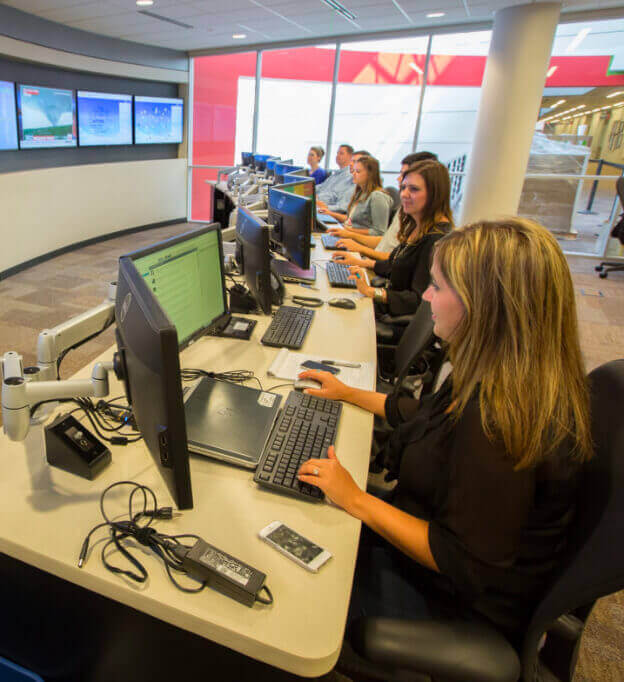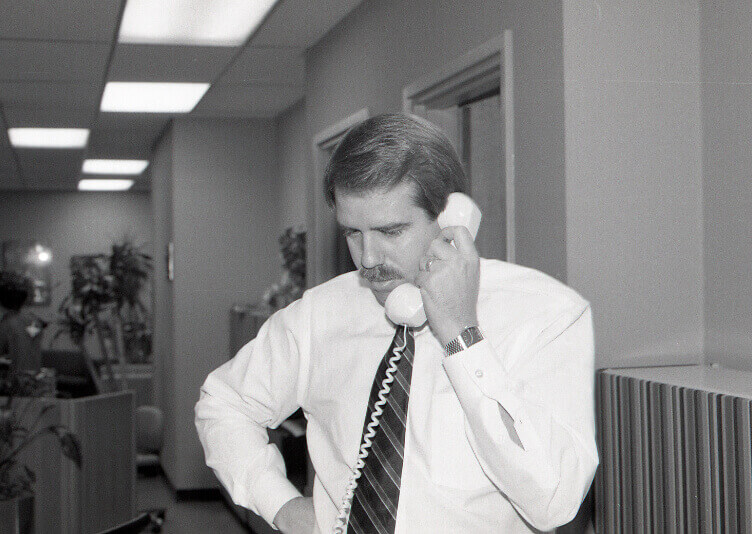
Whether the feedback is positive or negative, the Employees in Southwest’s Listening Center are ready to help wherever they can.
Social Studies: Social Media the Southwest Way
A Southwest Customer was going to miss her connection home, so she took to Twitter with a gamble. With her flight delayed by weather, she tweeted her wish: Could Southwest hold her connecting flight to Phoenix a few minutes so she could make the connection? Then she added the kicker: If they held her flight, she would bake a pie for them!”
It was touch and go, but Southwest landed in time for the Customer to make her connection. As they taxied to the gate, the Pilot announced connecting flight gates and jokingly added, “And we’ll be looking forward to getting that pie.”
Weeks later, a fragrant package arrived in Dallas, fulfilling the promise with a fresh-baked pie. The Team there shared the delicious pie with Operations. Count another win for Southwest’s commitment to listening to its Customers.
Southwest was one of the first and most nimble adopters of social media in the airline industry. Leadership quickly saw these new platforms as a means of expanding relationships and engagement with Customers. Social media added strands of vital, two-way, real-time communication.
Southwest’s social media adventure was rooted in its commitment to responding to Customers where they were. When Senior Advisor Customer Relations & Rapid Rewards Jim Ruppel first joined Customer Relations in 1980, the tools were “snail” mail and telephones. But times changed.
The first foray into “new media,” as it was called, came in 2006 with the Company’s blog, NUTS About Southwest. It was the first blog in the airline industry, and one of the first blogs in the travel space. NUTS created a place where Employees could share relevant Southwest stories, and Customers could engage with them. Colleen Barrett, who was President at the time, urged the first small group of bloggers, “This is on your own time, speak in your own voice, and remember that we are an airline of People.”
The blog “gave us a new way to tell stories,” said Senior Vice President & Chief Communications Officer Linda Rutherford. “When we started, it was all a big experiment, to be honest.” Southwest turned on newer social media channels slowly, “with the commitment that we would evolve over time to be that voice or provide that content that the audience told us they wanted.” Southwest opened accounts on Facebook and Twitter in 2007.
By December 2010, they had 1 million fans on Facebook. Customers were engaged, and Southwest was listening.
In time, each channel developed its own character. Twitter became the forum where people could “get Customer help in the moment,” Linda said. “So I’m in the gate area, my flight’s canceled. I can tweet Southwest and get a response very quickly to get re-booked, or re-accommodated, or to understand what my options are.”

Jim Ruppel has seen the tools of Customer Relations evolve from phone lines and snail mail to today’s modern social media environment.
Prime example: A line was growing at a short-staffed ticket counter at Chicago (Midway), and a frustrated Customer fired off a quick tweet. That sent a Senior Representative on the Social Care Team, into action over 900 miles away in Dallas.
The Rep shared the tweet with a Ground Operations Team Member sitting near him in Dallas, and within minutes, the Station Manager at Midway sorted out a miscommunication about a scheduled break. “Hey, thanks for the catch,” the Rep replied to the original tweet. He added that more Customer Service Agents were on the way. Soon after that, the Station Manager sought out the Customer in line and shook his hand, thankful for the Customer’s help in responding quickly. Total elapsed time: about seven minutes.
Meanwhile on Facebook, Customers said they wanted bold visuals and video, especially about sales or announcements when Southwest was entering a new market. Instagram sprouted desires for posts about what was happening that day or images for aviation geeks.
Over time, these relationships with social media became not just ways to share stories, but increasingly, a tool for Southwest to improve its response to operational issues.
Within Customer Relations, the Social Care Team grew alongside the other Customer Care channels for telephone and email response. New Hire Customer Care Representatives started with the telephone Team and gained experience in Customer Service fundamentals. After they mastered that channel, they typically moved to the email Team to hone their writing skills. Then they received training in social media engagement. Because social media care requires both good writing skills and real-time problem-solving, Jim explained, “That is the last channel that we introduce them to.” By then, they have sharpened their skills using all the Customer Service tools.
This multi-channel capacity gives Southwest exceptional flexibility for responsiveness. So, if weather delays in the Northeast cause a spike in volume on the Social Care Team’s channels, having representatives who are well-versed in all three enables Jim to move them between the channels to address those spikes. They can then shift back once the spikes dissipate. That’s how Southwest can offer the best service across all channels and optimize the response.
“It has been a game changer for us, as far as being able to offer superb service levels,” he says.
It all goes back to listening, says Linda. “And then that gives us an opportunity to know if there’s a conversation that we can join that makes sense, if we need to listen for a while because something is reaching a critical mass that we then need to be able to go address.”
“A lot of times people want to vilify social media,” she says. “But for a brand like Southwest, overwhelmingly what it shows is the humanity.” She adds, “We see our social media as a treasure trove of storytelling. It’s people getting on there and sharing amazing stories of the reason why they got on an airplane.”
